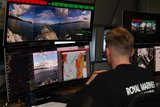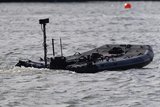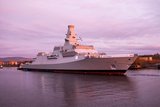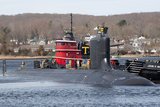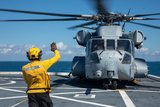SOF Week 2025: SubSea Craft introduces MARS USV
MARS USV can be deployed in contested environments (Photo: SubSea Craft)
Aiming at answering the growing international demand for unmanned surface capabilities, the Portsmouth, UK-based company SubSea Craft (SSC) showcased for the first time its new USV at SOF Week 2025.
The MARS system is designed to be a low-signature, multi-role, mission-configurable capability and provide survivability in contested environments.
“There is a clear global need for the responsive development of advanced maritime platforms that can meet evolving force requirements and objectives,” Camilla Martin, CEO of SSC, stated.
Related Articles
US Navy’s Navigation Plan 2024 to focus on rapid integration of uncrewed capabilities
US Navy seeks the best combinations of crewed vessels with commercial UAVs and USVs
NAVSEA invests more in support of mine countermeasure USVs
MARS encompasses the latest innovations in USV technology, with applications for a variety of force objectives. It can be deployed in wingman support tasks to minimise risk to manned deployments and provide a force multiplying effect.
Built to match global SOF requirements, it can also operate in ISR missions, including long-range surveillance to increase the recognised maritime picture in environments with degraded communications.
Talking to Shephard, an official for the company explained that MARS features “standard camera feeds” and “redundant comms” and can reach up to 300 nautical miles and speeds of up to 30 knots.
In terms of payloads, this USV was built to provide modular integration and carry multi-domain kinetic and non-kinetic systems.
“It is a modular craft, so it is not up for us to tell end users what they need,” SSC official remarked. “We give them shape, space and power, and then end users can put what they want in our craft.”
According to the company, the platform was taken from concept to launch in 100 days and underwent testing and validation with AUKUS partners. It included open water trials with the Australian Maritime College, which signed an R&D partnership with SSC in 2023.
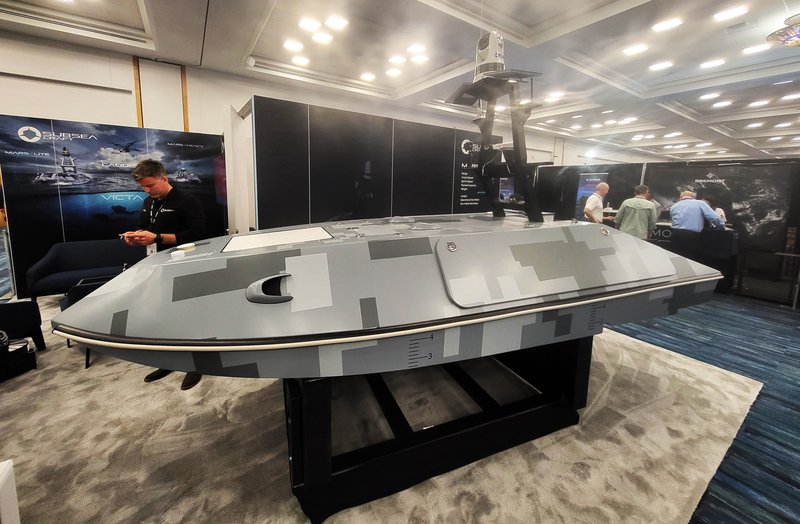
“That project [to develop MARS] was a demonstration of how SubSea Craft reacts at the pace of emerging operational requirements,” the official highlighted.
“MARS has emerged as a disruptive force for the modern battlespace,” Penny Mordaunt, chair of SubSea Craft and former UK Secretary of State for Defence, stated. “Its successful testing following an impressive turnaround from its ideation is testament to SubSea Craft’s cutting-edge approach to accelerated research, development and delivery.”
VICTA diver delivery platform
MARS uses the same open architecture digital control system as SSC’s dual-domain craft VICTA, which is a next generation maritime delivery platform.
Capable of a high-speed surface transit before rapidly transitioning to a wet, subsurface mode for covert delivery of operators and/or equipment, the VICTA platform is deployable as an individual asset or as a force multiplier, enhancing maritime operations through networked, crewed or autonomous modes.
This craft has been developed through research and feedback from operators, military strategists and combat support, deployment and logistics force elements from diverse countries.
Related Equipment in Defence Insight
More from Naval Warfare
-
![Hanwha wins Australian government approval to increase its stake in Austal]()
Hanwha wins Australian government approval to increase its stake in Austal
The contract would mean the two shipbuilders can collaborate strategically and enhance shipbuilding capabilities in Western Australia.
-
![Royal Australian Navy sizes up modernisation plans for new and existing capabilities]()
Royal Australian Navy sizes up modernisation plans for new and existing capabilities
The Australian navy is pushing ahead with its efforts to modernise its workforce and capabilities while balancing risky submarine upgrades, ageing Collins-class boats and a shrinking minehunter fleet. Head of navy capability RAdm Stephen Hughes updated Shephard on the force’s progress.
-
![UK to join US Navy’s Virginia-class submarine assembly effort to speed up construction]()
UK to join US Navy’s Virginia-class submarine assembly effort to speed up construction
The expansion of the Virginia-class submarine construction to UK shores could accelerate the project as US shipbuilders continue to fall short of delivery goals.
-
![US Navy seeks new sensors for the CH-53K King Stallion heavy-lift helicopter]()
US Navy seeks new sensors for the CH-53K King Stallion heavy-lift helicopter
The US Navy intends to publish a draft request for proposals in Q2 2026 and conduct an open competition for the supply of new electro-optical and infrared capabilities for the CH-53K heavy-lift helicopter.








